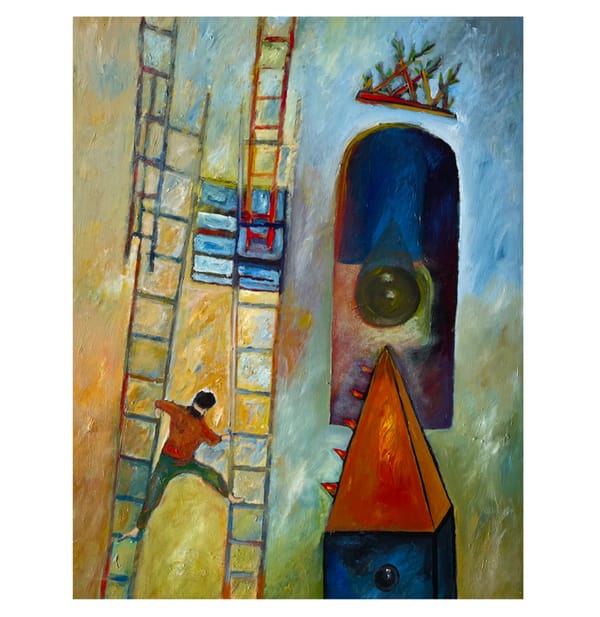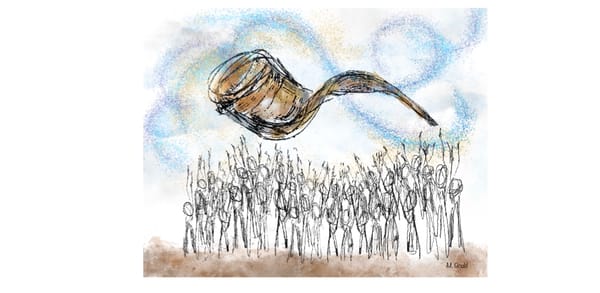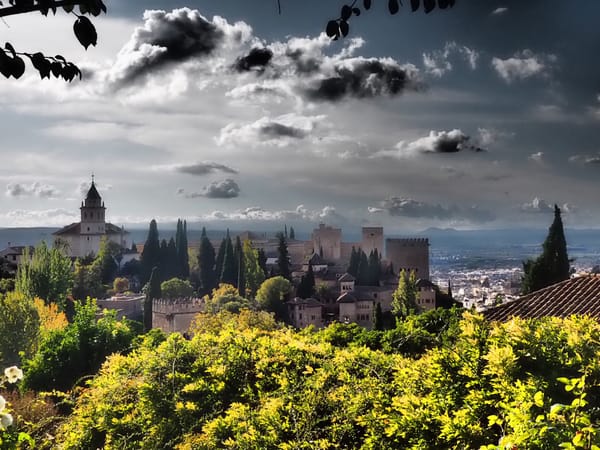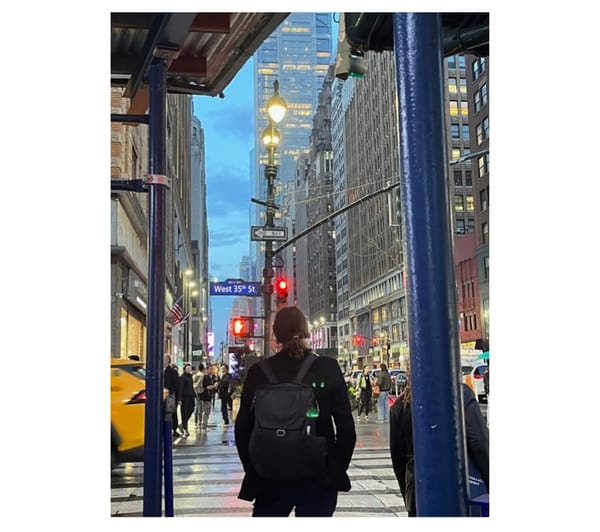Jews, Hate Speech, and the Incitement to Violence

Ron Duncan Hart
As an American, I am proud of our tradition of freedom of speech, but I am concerned that hate speech is eroding respect for the Other which is a necessary ingredient to the freedom of speech. I am an anthropologist, and I have done research, observing life for decades in the United States, South America, and the Arab world. I am accustomed to conflict, cultural clashes, and people who do not understand each other. But, recently I have encountered conflict that burned a hole in my resistance. I was asked to speak at a large state university in an open public forum that focused on the formation of the modern state of Israel. The program had been scheduled for many months, but after the Hamas attacks of October 7 and the Israeli response, there was a stream of hate speech and hostile demonstrations against Israel and intimidation of Jews on the campus. Parallel to the hate speech, gun violence continued its regular drumbeat of killings. As the program got closer I gradually became more nervous, quietly almost unconsciously at first, but the nervousness edged into my being.
The university had a history of anti-Israel demonstrations that often blurred into anti-Jewishness, and I had witnessed and lived through that problem for a decade. In the five days before I was to talk, a string of anti-Jewish incidents happened in rapid succession. A performance by the Jewish performer Matisyahu was cancelled in Santa Fe, either in protest or fear, followed by Jerry Seinfeld being harassed in Albuquerque with belligerent language, and a group tried to force the University of New Mexico trustees to take an anti-Israel vote. The crescendo of anti-Israel, anti-Jewish rhetoric seemed unstoppable. Active shooter events continued in nearby states, on Friday before the talk a colleague at the University of Colorado in Colorado Springs emailed me that they were in an active shooter situation. Two people were dead. The campus was locked down. People dead. Fear struck.
I had been there before. I had been shot at on a university campus apparently because I was an American, a Gringo, in the wrong place at the wrong time. I began to feel that fear again, now in my own country, because I was a Jew. Fear began growing in my conscious that I did not want to admit to myself or my wife. I found myself online looking for bullet proof vests. I had begun to fear speaking at a public event on a campus known for its antagonism toward Jews and where anyone could have a gun. I told myself the fear was irrational. The best vests seemed to come from Israel, but they would take too many days to arrive. Where could I get a bullet proof vest?
I began to have vivid visual memories of the moments when an unknown student was firing at me. I had been invited as a Fulbright Senior Scholar to Colombia. After my Fulbright appointment ended I was given a special appointment to stay longer as an International Scholar at the major public university. I knew it had a reputation for anti-Americanism among students, but it was a large sprawling campus, and my colleagues and students were not so politicized. They were focused on learning.
Then, during the Fall semester things began to change. Student agitation was growing. There were regular demonstrations and confrontations with the police, and classes were being cancelled. Demonstrations spilled out into the major thoroughfare running in front of the university closing it and snarling already congested city traffic. During that time one of my anthropology colleagues had been killed and another kidnapped, and students told me that a rumor was circulating that I was an agent of the hated CIA.
In that uncertain environment one of my students was killed in a shoot-out with police. He was a member of a left-wing guerilla cell and had been shot robbing a bank to finance the activities of his cell. He had seemed like a normal kid to me; I could not imagine him as a violent ideological protagonist. Following his death a series of events in rapid succession would change my life. First, I began to see a bearded student I had not seen before sitting in a couple of my classes. When I asked him about it, he said that he was with his girlfriend. Maybe he was, but the following events made me question that.
The demonstrations intensified, and I heard another student rumor that someone had obtained a gun, which was illegal in Colombia. The gun rumor said that they were hoping for a victim whose death would avenge that of their comrade (i.e. my student) and rally students to their cause. Then, one afternoon I was finishing a class down a remote wing of our classroom building. When the class ended, I stayed talking to the last student, and as we walked out, I realized the building was empty. Everyone had left, which meant that there was a demonstration and classes had been cancelled, but the message had not arrived to us. I followed the last student out of the building. The next few moments have returned to me vividly over and over again, as if I were in that place today.
Walking out of the building the sidewalk led alongside a two-story high white concrete wall. On that day when I had walked a few feet out of the door, I began to hear shots and the dull splat of bullets hitting the wall just around me. At first there were two or three, then another and another. My student ran away, and I ran and hid behind my car parked nearby. The shooting stopped. A noisy student demonstration was going on at the entrance to the university which was next to my classroom building, and the shots had come from that crowd. I got into my car and sliding down in the seat to not represent a target, I drove away from the crowd.
It was a scary moment, but I thought I had been caught in random crossfire between police and students. Subsequently, I learned there was no crossfire, no police shooting, and it became obvious that I had been the target. Although the students had a gun, they could not shoot at a policeman, which would have triggered a devastating police reaction. They would not shoot a fellow student, a comrade. But, I was a Gringo and the professor of the student who had been killed. I was an acceptable target.
We lived outside of Bogota in a rural area where everyone knew each other, and a day or two later a local man told me that two men had been there asking where I lived. They did not want to go to my house; they just wanted to know where it was located. He thought it was strange, and I should know. Then, back at the university two of my students approached me on one side of the cafeteria and said, “Be careful, they know who you are,” and they moved on. Spoken surreptitiously out of the hearing of others, it sounded like a warning.
It was near the end of the semester. Another large student demonstration formed at the main entrance to the university shutting down the major thoroughfare. Classes were cancelled, and I got the message this time. I was leaving by the front roadway out of campus. It crossed over a bridge under which students walked through a tunnel like entranceway into the university. When I was on the bridge, I saw the large demonstration below confronting the police contingent which had a water tank truck with its water gun ready to spray students. Rocks were being thrown. Suddenly, I began to see the muzzle flashes of a gun in my direction from the crowd. I was the only person on the bridge. Whoever had the gun was shooting at me. I rushed off the bridge. I had been shot at again, twice in a matter of days. I was no longer safe. Knowing that even an untrained student shooter might not miss a third time, I had to get out of there. Whoever was shooting at me was not an assassin. They knew who I was and could have walked into a classroom and killed me, but there would have been witnesses, and the person would have been caught. Shooting from the crowd in a demonstration was anonymous. They could have blamed the police. It would not have been an assassination but a shooting.
I consulted a close university colleague, who suggested that I should get a bodyguard. “Don’t let them drive you away,” she recommended. I could not envision myself being escorted to class by a bodyguard or living with the constant fear of a shoot-out between the bodyguard and the unknown student who had the gun. Live with a bullet proof vest to be able to teach? No!
Now, years later in New Mexico those days and events came back alive in the theater of my mind. The students who told me, “They know who you are,” walked up to me over and over again. The splat of bullets on the concrete wall around me. Running and hiding behind my car. In my mind each event was like a video on a loop.
A psychiatrist told me that it was a long-suppressed PTSD, and I realized that hostile anti-Jewish demonstrations on the campus where I was to speak had dragged me back to the ultimate fear of life itself in those dark days when I was a target for an unknown student shooter. I am a practiced professional with years of experience addressing Othering and cultural conflict. As an anthropologist in Colombia, I had worked in regions where leftist guerrilla military groups were active, and I understood that danger. Confronted again with the danger of ideological anger slipping into the readiness to kill was my personal history, awful and overwhelming.
I fear the present hatred in the United States toward Jews and Israel could be reaching a tipping point where it passes beyond ideology or anger to violence itself. That long-buried fear got me, and it was physical. I could not talk about it without a jolt of alarm, life threating, sweeping through my body. I told myself that I had the rational tools to deal with it, but it was irrational. I could not stop it.
I have lived through violent hatred on campus, and it is not benign. Anti-Jewish and anti-Israel hostility on campus is not benign. When it goes beyond ideological or academic debates about policy, it can enter the emotional zone that triggers violence. What are young Jewish students doing on campuses rife with anti-Jews hostility? We live in a country full of guns, and hate speech has consequences. When anti-Jewish, anti-Israel activists turn to hate rhetoric, they can trigger those who cross the line into mayhem. Like many of us, I had hoped that the hatred of Jews that had been endemic in the European world for centuries had subsided, but now we are seeing it roar back to life in this new manifestation.

Jewish Community Foundation of New Mexico
Congregation Albert
Temple Beth Shalom
Jewish Community Center of Greater Albuquerque
The Institute for Tolerance Studies
Shabbat with Friends: Recapturing Together the Joy of Shabbat
Copyright © 2024-2025 New Mexico Jewish Journal LLC. All rights reserved.



